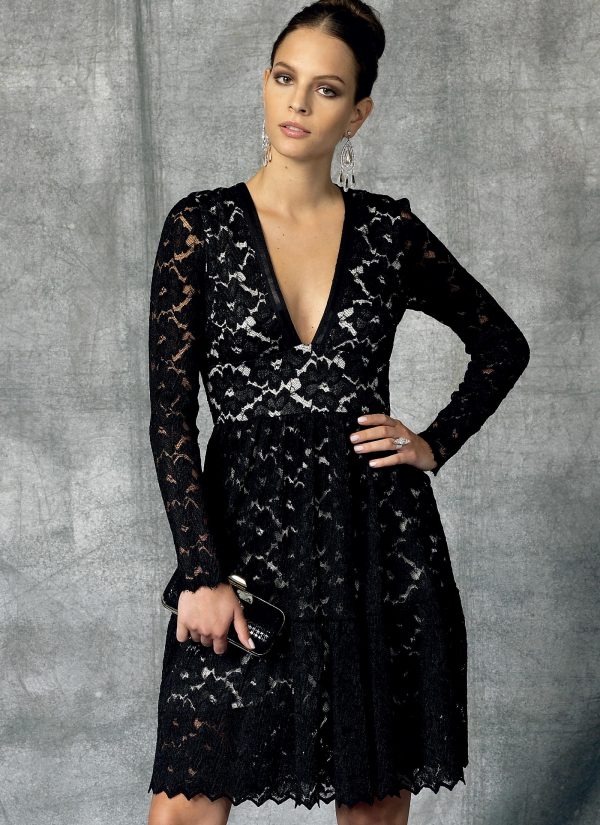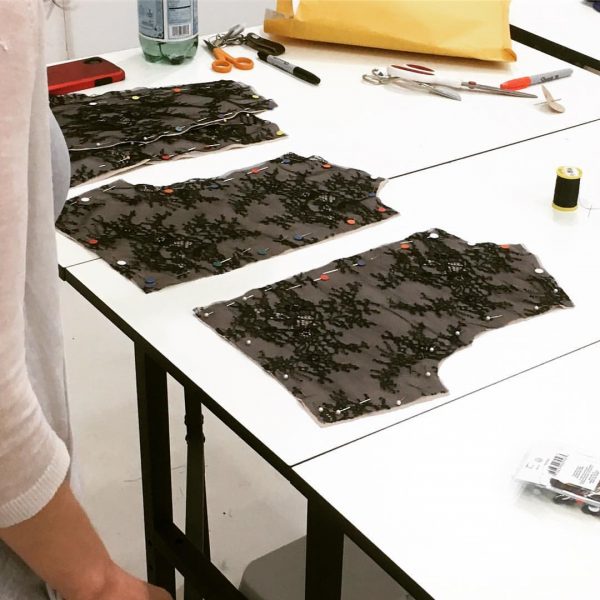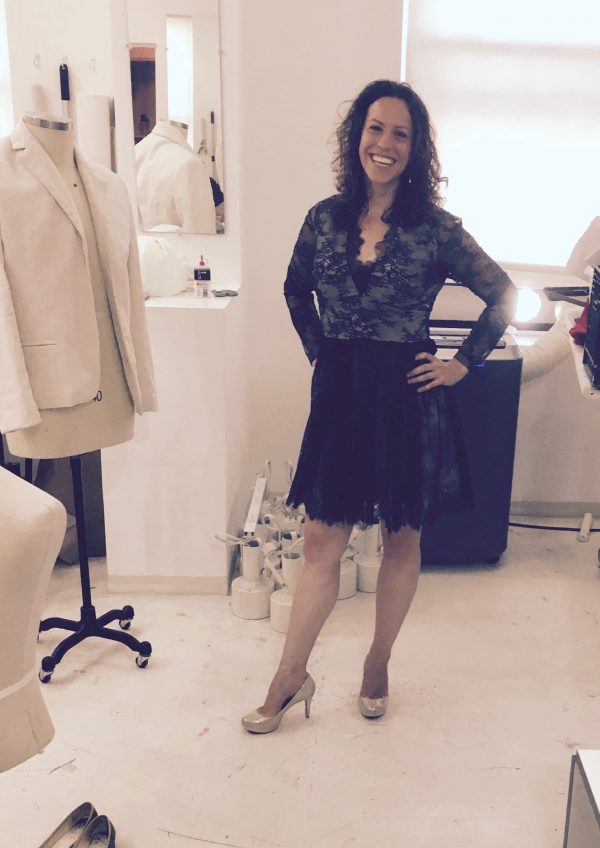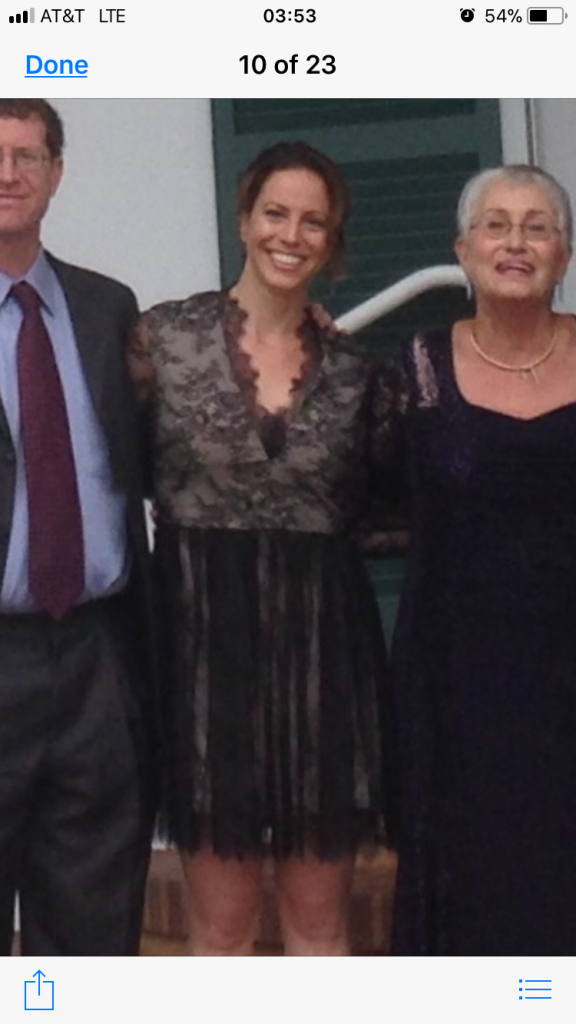Netta started off with a Vogue Pattern, #V1471, and asked how hard it would be. Since she was a beginner, we began the conversation that we always have when students with zero experience come in to class wanting something that is challenging for someone who knows what they are doing, much less someone who has never touched a sewing machine before.

It helps that Netta is a roboticist and engineer by trade, so she is used to thinking in terms of pieces and process. With the warning given and understood, we got to work.
This pattern calls for a two-way stretch knit, but once we went through the muslin stage she couldn’t find one that seemed right and ended up settling on a lightweight black Chantilly with little stretch in either direction from Fishman’s Fabrics. There was a bit of a lag in finding an underlining that was both the right color (medium skin tones can be hard to match without looking like suntan pantyhose from the 70s) and heavy enough to make the dress feel substantial. With Chantilly’s light weight, you can easily feel (and look) like you are wearing a peignoir rather than a dress. Not great for a family wedding. She settled on a woven lightweight suiting that blends with her skin tone and has the same stretch as a fairly stable knit as the underlining. We then lined it in a matching lightweight silk.

We had the muslin fitted out and the pattern altered, so it was time to start cutting the panels. When you are cutting any patterned fabric, it helps if you think of how the patterns are going to interact when you are wearing them. It is awfully nice to see a pattern mirror itself left-right if possible, so we started cutting piece by piece with this in mind.

Once we had the pieces cut and the layers basted together, we were then constructing the main seams. Once we got past that, it was on to the design decisions and all of the thousands of stitches that go into sewing lace like this to get the shapes to blend.
In this case, the pattern called for a gathered tier of ruffles as the hem, but the lace had such a nice scallop that we forwent the lower ruffle and cut it with the scallop as the hem. It looks better, and is actually much easier – no hemming!
When we had the main body of the dress done, she thought the open neckline was just a little lower and more open than she thought was appropriate, but no worries: We used the remaining scallop from the lace to edge the neck, giving the illusion of more coverage and propriety than adding something like a band or ribbon.

And, once the work was done and the backstitches knotted off, she tested it out for the MOST important quality: “I HAVE to be able to dance in this!”
And with that, off she went!

…and so off we go to sunny Tel Aviv!


